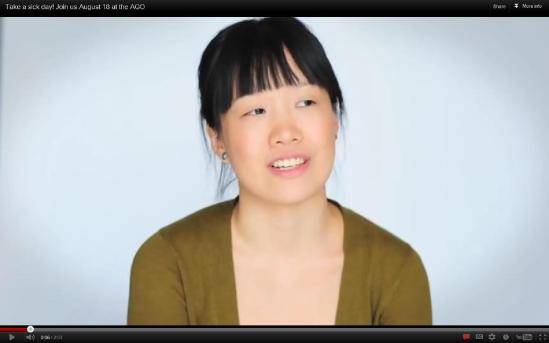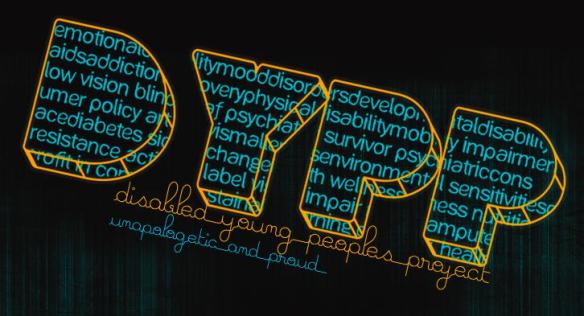CTCHC Community Mosaic Project is a partnership between Red Dress Productions and Central Toronto Community Health Centres.
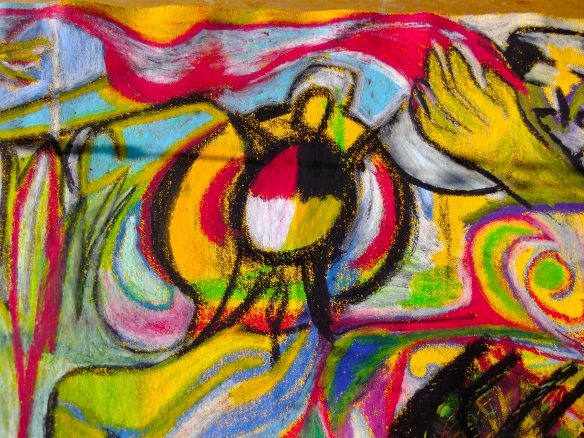
In community-engaged art contexts, we’re often asked: How do community consultations connect with the design? What is the relationship between you (the artists), contributors, and communities?
The answer – or, more accurately, the answers – are layered and nuanced. This narrative attempts to retrace and distill the collaborative process that we call “arts-based research”, or alternately, community consultation (of which arts-based research is the major component, and the foundation of our work in and with communities).
The backstory: In February 2011, Red Dress Productions was approached by CTCHC to partner on the CTCHC Community Mosaic Project. We spent the next year fundraising, imagining, and planning the project. In January 2012, we began.
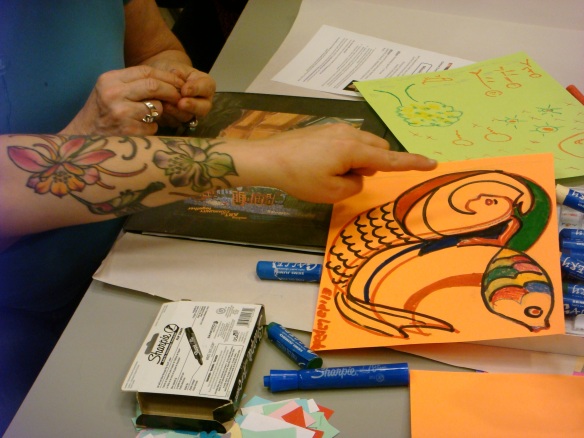
Contribution stations with images and project information, along with flipcharts and markers and a suggestion box were installed in the centre’s lobby and the primary care area on 2nd floor to welcome ideas. Extensive promotion and outreach was done both within the health centre itself, and beyond through grassroots networks and with community partners[1].
We met with more than 150[2] project contributors to: inquire and listen; brainstorm ideas, themes, and motif; and experiment with visual expressions using accessible approaches to art making. We facilitated a total of 12 community consultations with program participants, community members, staff and board members at Central Toronto Community Health Centres – home of Queen West Community Health Centre and Shout Clinic.
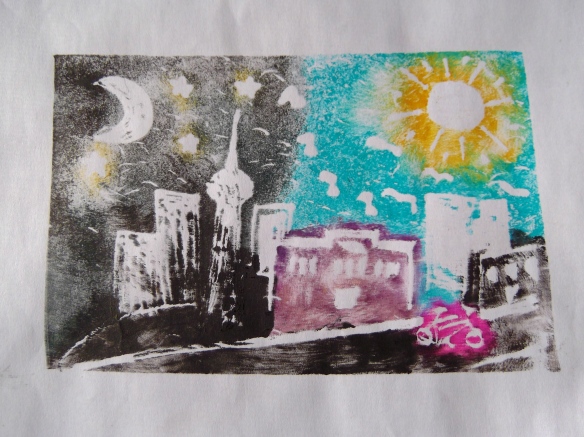
At each consultation, we assume little or no prior knowledge of the project, who we are, or our approach to community art. We begin at the beginning: introductions and welcomes, a review of the project’s path and development process, where we are in the project at the time of the consultation, what we’ve heard from contributors at previous consultations, and where we were going.
Food, drink, art materials, and project handbills were laid out, and a projection system was set up. Transit tokens were made available to increase access, and, at two consultations, we had the support of an Anishinabe Elder, and a Cantonese and Mandarin interpreter. We worked hard to thread the voices of contributors from previous consultations. On a practical level, we did this by recording discussion points and ideas (without personal identifiers), and photographing contributor-generated artwork at each consultation, which we shared these ideas and images at subsequent consultations.
Most of the consultations took place in specific programs at the centre including Four Winds, TRIP, Sketch, the Perinatal Program, Primary Care, an all staff meeting, and a Harm Reduction Open House. We also held three public consultations, which were open to anyone interested in being a part of the project. Each consultation was designed to meet the needs of contributors, with the time amount of time available (from one to three hours), depending upon the program. We brainstormed in large and small groups, and had many one-to-one conversations. We made art with a range of materials including oil pastel, foam plate “carving” and printing, and collage.
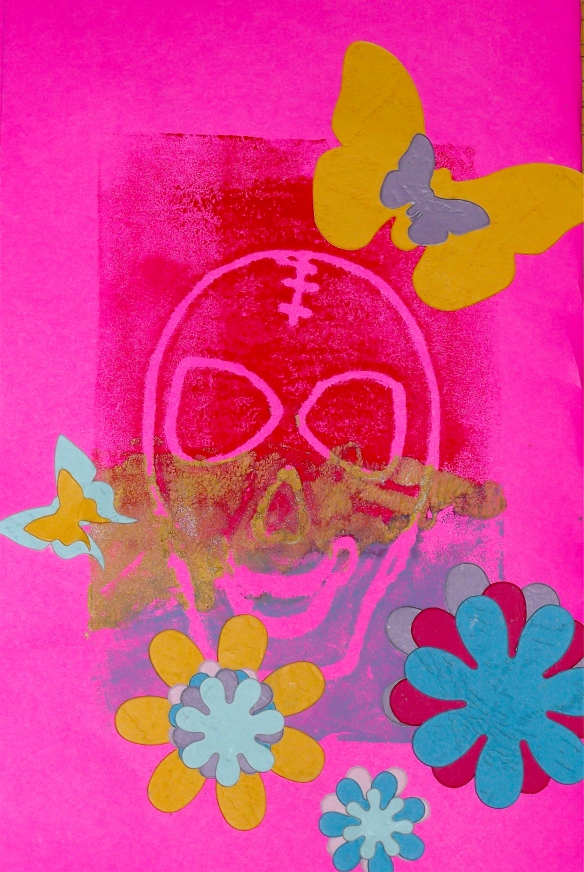
Essentially, we invited contributors to move from spoken language into visual language. Many contributors said, “I’m not an artist,” or “I can’t draw.” We offered materials and encouragement: Try experimenting with colour, with shapes. If you move your pastel across the sheet, something will show up. We returned to our anchor questions: If there was an artwork on the CTCHC building that welcomed you and the communities you’re a part of, what might it be? What creates healthy communities? What does this look like?
We also talked about the wall that the artwork would ultimately live on (at the front entrance of the building on Bathurst Street), and discussed public space, and other site-specific environmental and architectural elements. At the end of each consultation, we reviewed our findings from this participatory arts-based research – notes, brainstorm maps, sketches, prints, and collages – and together, we identified key words or phrases, themes, and visual motif.
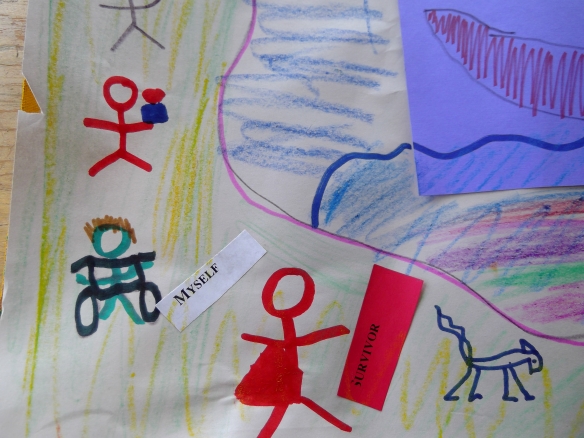
The great volume of material produced through the consultation process – more than 200 small solo and multiple artworks, 20 pages of notes, and 15 flipchart brainstorm maps – draws clear lines between the social determinants of health including access to safe and affordable housing, nutritious food, non-judgmental health care, and community engagement. Certain images and motif repeated; however, accompanying stories and perspectives carried distinct and often multiple meanings.
Let’s look at water, as one example. Water was drawn as lake, river, stream, and ocean. Water was also suggested by canoes, kayaks, and boats; sea and freshwater birds, beavers, fish, turtles, and Turtle Island itself. There were stories of selkies, merfolk, water spirits and sprites; deep water, still waters, and still waters running deep.
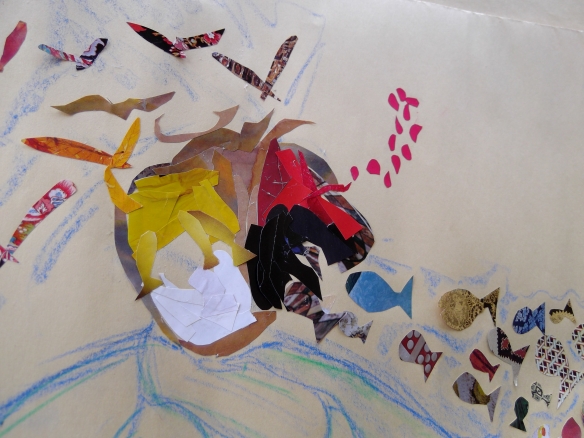
Water was cited as the foundation of all life: 75% of our planet composition is water, as is true for most plant and animal life. Direct connections were drawn between water, nutrition and sustenance, and environmental health and justice. Many contributors associated water to birth, motherhood, and parenthood. Some spoke of rushing waters carrying the voices of ancestors. Concerns were voiced for rising waters, diminishing shorelines, and the impact on Indigenous peoples. Others spoke of migrations across oceans to Canada.
As lead visual artist, it’s my job to produce a design that reflects contributors and the communities that intersect at the centre, and that threads visual motif, themes, stories, and nuances therein. The design must also be technically and artistically achievable in an open and inclusive studio environment, and have an aesthetic relationship to the neighbourhood – in this case, the Queen West neighbourhood. So, how is this done?
First, I don’t consider myself to be external to a process; I’m not a third party observer who translates. We exchange ideas and goodwill; the learning and sharing is mutual. I reviewed and reflected on all the ideas and notes and images in their totality – all voices, whether a community member contributed to one or three consultations. I looked for related elements, echoes, and threads. I listened closely to the quietest voices, and attributed value to those voices. I recognized differences in perspectives and lived experience. This recognition speaks to our mission as community artists: To produce original artwork that strives for innovation, technical excellence, and that elicits dialogue and creative exchange across difference.
I looked for related elements, echoes, and threads. I listened closely to the quietest voices, and attributed value to those voices. I recognized differences in perspectives and lived experience. This recognition speaks to our mission as community artists: To produce original artwork that strives for innovation, technical excellence, and that elicits dialogue and creative exchange across difference.
Inspired by contributors, I also conducted more text-based research on subjects including native and drought tolerant flowers and shrubs; tree physiology; Mississauga First Nations unceded territories (upon which Greater Toronto is built); the Law of Conservation of Energy; sky lanterns (also known as Chinese lanterns); Atlantic and Pacific salmon; migratory birds in the City of Toronto; and archival footage of Queen Street West from Trinity-Bellwoods Park to Augusta.
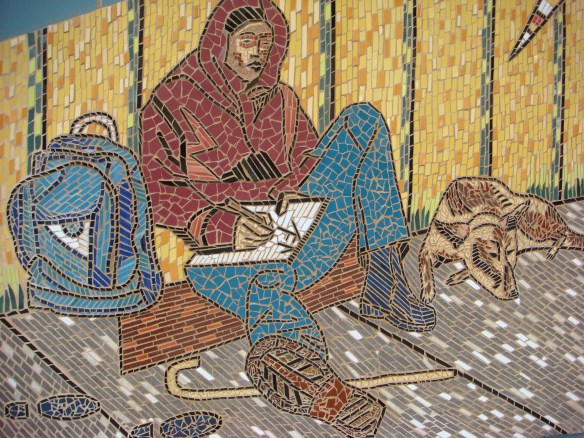
CTCHC Community Mosaic, 2012, detail
Finally, I walked about the Queen West neighbourhood, and took many photographs. This field-research was inspired by a young self-identified homeless contributor who said: “Look up. Look down. A lot of people forget to look at their environment. A lot of people don’t want to see me.” I allowed this contributor’s voice to guide me: to enable me to see more, and differently. I saw: cranes and condominium towers; grasses and Eastern Red Columbine growing out of concrete; shoes strung on hydro lines; discarded coffee cups, feathers, and cigarette butts; sewer grates and birds nests; weathered paint, vacant storefronts, and many new home décor boutiques; and a lot of graf art and tagging.
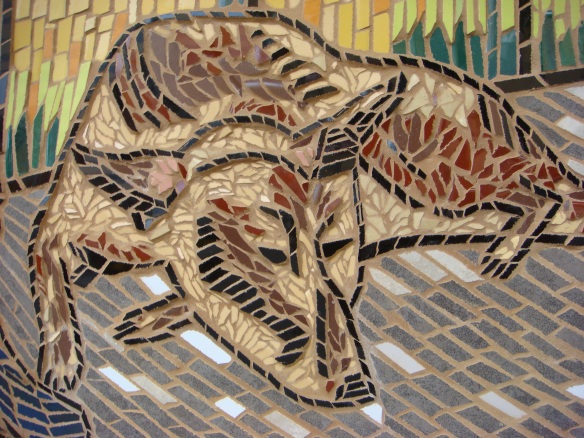
CTCHC Community Mosaic, 2012, detail
Through the consultation process, contributors shepherd Red Dress Productions’ artistic leadership team, and I steward the progression of this arts-based research into a cohesive design – one that makes room for multiplicities, difference, and echoes.
We presented my first-draft design to 60+ contributors at our final public consultation on April 4, 2012. We invited feedback, which was offered and incorporated into the final design. Shortly thereafter, the studio was opened.
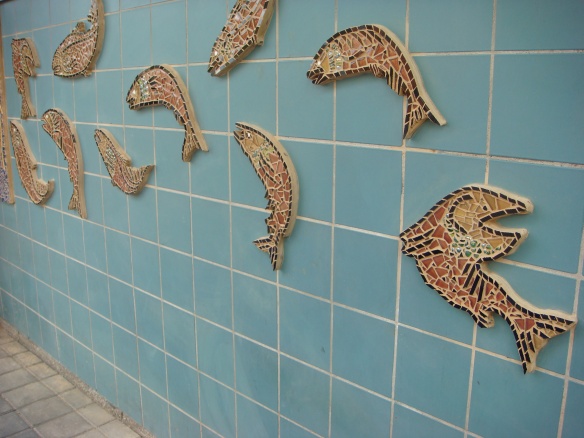
CTCHC Community Mosaic, 2012, detail
Consultation, of which arts-based research is the anchor element, is a collaborative dynamic process. It’s not a linear here to there event. It’s cumulative and circular. It loops, doubles back, and stretches forward to make room for more of us.
It is cultural democracy at work. It is how we make real our belief that all people should have opportunities, access, and tools for shaping their neighbourhoods and communities.
– Anna Camilleri
Lead Visual Artist for CTCHC Community Mosaic Project
Red Dress Productions, Artistic Co-Director
Postscript:
More than 350 community members contributed to the creation of the CTCHC Community Mosaic Project, which was unveiled on Wednesday June 20, 2012.
The CTCHC Community Mosaic Project has been made possible through the support of the Toronto Arts Council, the Ontario Arts Council, and the City of Toronto: Public Realm, Transportation Services, and the TD Bank Group.
CENTRAL TORONTO COMMUNITY HEALTH CENTRES’ (CTCHC)
(Queen West Community Health Centre and Shout Clinic) mission is to act as a resource to improve the health and quality of life of the people and communities we serve. CTCHC achieves this through health promotion, harm reduction, education, community outreach, engagement, development and advocacy, as well as through the provision of innovative primary health care, counselling, support and dental services.
To find out more about CTCHC (168 Bathurst, south of Queen St. West), visit http://ctchc.com or call 416-703-8482
RED DRESS PRODUCTIONS (RDP) is a Toronto-based, not-for-profit, professional arts company that creates and disseminates interdisciplinary art and performance projects and works with/in communities on community-engaged public artworks. Since 2005, RDP has: directly engaged 2000+ contributors in the conceptual development and building of 7 community engaged public artwork projects; produced 5 original interdisciplinary stage performances; toured to more than 8 urban and rural Canadian communities; and created 17 paid apprenticeship positions for youth under the age of 25.
To find out more about Red Dress Productions, visit us online at http://reddressproductions.blogspot.com
All images are courtesy of Red Dress Productions and project photographer Katie Yealland.
[1] Community partners include: Sketch, Meeting Place Drop-in (St Christopher House), Scadding Court Community Centre, YMCA House Residence, Youthlink, Supporting Our Youth (Sherbourne Health Centre), and Bleecker Street Co-operative Homes
[2] The 150 contributors cited here are specific to the consultation phase, which informs the conceptual development of the artwork.


